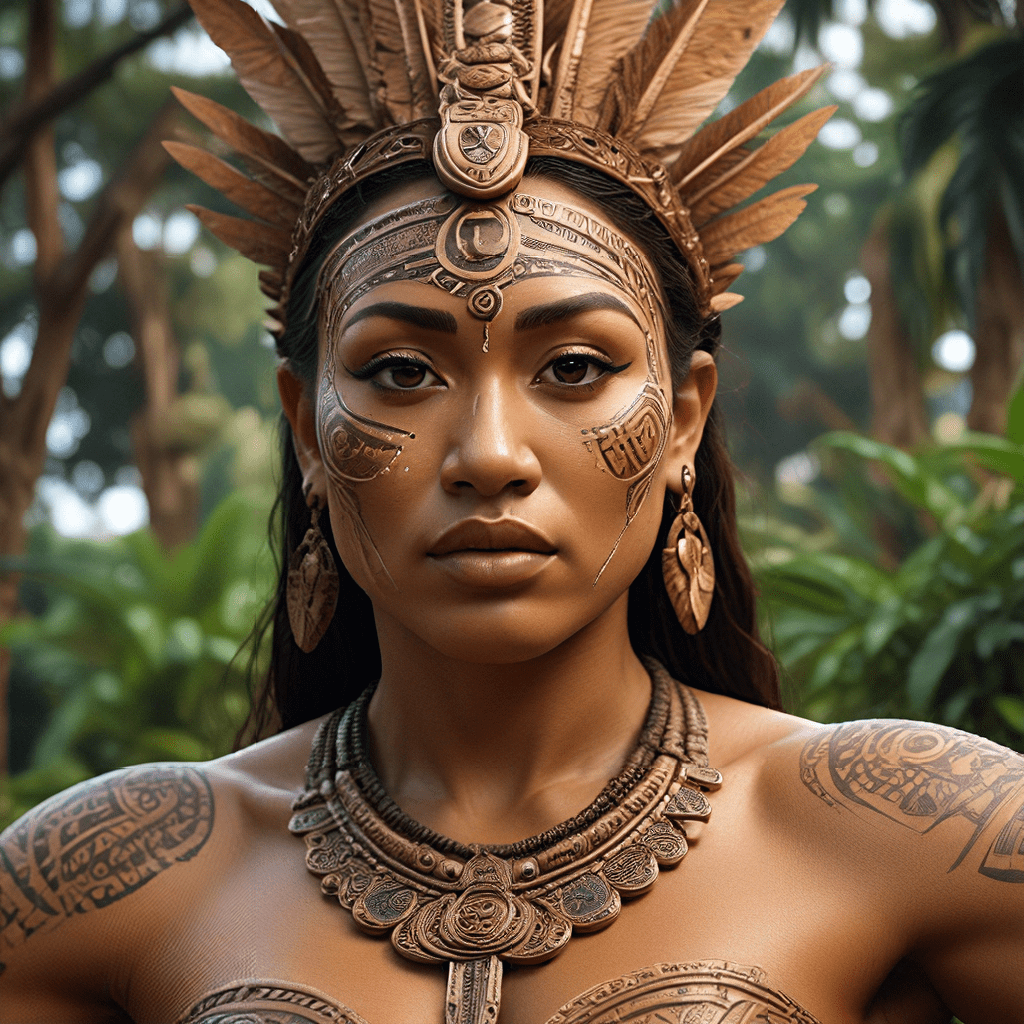Maori Mythology and the Concept of Interconnectedness
Maori mythology, a rich tapestry woven from stories passed down through generations, offers profound insights into the concept of interconnectedness and unity. It's a world where everything is deeply connected, from the smallest insect to the vast universe itself. This belief in interconnectedness, known as whanaungatanga, is a fundamental pillar of Maori culture, shaping their worldview and guiding their actions. Maori mythology teaches that all things, whether human, animal, or natural elements, are part of a single, interconnected web of life. This web is not just a physical connection but also a spiritual one, where all beings share a common origin and destiny. Understanding this interconnectedness is essential to living a fulfilling and harmonious life within the natural world.
The Creation Myth: Te Kore, Te Pō, and the Birth of the Universe
The Maori creation myth, a powerful story that explains the origin of the universe and all its inhabitants, beautifully illustrates the interconnectedness of all things. The myth begins with Te Kore, the state of nothingness, a void devoid of form or substance. From this void emerges Te Pō, the night, a realm of darkness and potential. Within Te Pō, the gods, known as atua, begin their work. The most important of these gods is Tane, the god of the forest, who separates the sky ( Rangi ) from the earth (Papa ) to create the universe as we know it. Other gods also emerge, each playing a vital role in shaping the world: Tangaroa, the god of the sea, Rongo, the god of cultivated foods, and Haumia, the god of wild foods. These gods, born from the darkness of Te Pō, are not separate entities but rather aspects of a single, interconnected force. Their actions create the world and all its living beings, demonstrating that everything is fundamentally connected and interdependent.
The Importance of Whanaungatanga: The Bond of Family and Community
Whanaungatanga is a fundamental concept in Maori culture, emphasizing the bonds of family and community. It signifies the interconnectedness of all people and their shared responsibility for each other's well-being. Family is central to whanaungatanga, extending beyond immediate blood ties to include wider kinship groups, known as whanau. This expansive view of family underscores the importance of shared responsibilities, mutual support, and collective care. Whanaungatanga extends beyond family to embrace the entire community. People are bound by shared history, cultural traditions, and a sense of belonging. This interconnectedness promotes cooperation, social harmony, and a strong sense of collective identity.
The Role of the Gods: Tangaroa, Rongo, and the Interdependence of Nature
Maori mythology features a rich pantheon of gods, each representing a specific aspect of the natural world. These gods are not separate entities, but rather manifestations of interconnected forces that govern the universe. Tangaroa, the god of the sea, embodies the vastness and power of the ocean. Rongo, the god of cultivated foods, symbolizes the harmony between humans and the land. Their interconnectedness is evident in the way they influence and depend upon each other. For example, Tangaroa provides the fish that Rongo cultivates the land to nourish the people.
The Power of the Mana: The Force that Connects All Things
Mana is a vital concept in Maori mythology, representing the life force that flows through all things. It is the spiritual essence that connects all beings, from humans to animals to plants. Mana is not a static entity but a dynamic force that can be nurtured or diminished. It is present in all things, but it is particularly strong in those who possess leadership qualities, ancestral connections, or spiritual wisdom. Mana emphasizes the interconnectedness of all things, implying that our actions have a ripple effect throughout the universe. By respecting and nurturing mana, we can maintain harmony with the natural world and ensure the well-being of all beings.
The Importance of Maintaining Balance: The Harmony of Nature and Humanity
In Maori mythology, the concept of balance is paramount. They believe that humans are not separate from nature, but rather an integral part of it. The interconnectedness between humanity and the natural world is crucial for maintaining a harmonious existence. This balance is often represented by the concept of tūrangawaewae, which translates to "standing place" or "place of belonging." Tūrangawaewae highlights the importance of respecting the land and understanding our place within the natural world. Disturbing this balance can have serious consequences, leading to ecological imbalances, social unrest, and spiritual disharmony. The Maori believe that everything in the universe has a purpose and a role to play in maintaining this delicate balance. By understanding and respecting this interconnectedness, we can live in harmony with nature and ensure the well-being of future generations.
The Concept of Tapu: The Sacredness of Life and the Unity of the Universe
Tapu is a fundamental concept in Maori culture, representing the sacredness of life and the unity of the universe. It signifies a state of restriction or prohibition, often associated with spiritual power or sanctity. Everything in the natural world, from animals to plants to places, can be considered tapu. This concept underscores the interconnectedness of all things and the need to treat them with respect. Tapu also emphasizes the significance of ancestral connections and the spiritual realm. By understanding tapu and adhering to its principles, the Maori believe that they can maintain harmony with the natural world, honor their ancestors, and ensure the well-being of their communities.
The Role of Ritual and Ceremony: Strengthening the Bonds of Community
Rituals and ceremonies are an essential part of Maori culture, playing a vital role in strengthening the bonds of community and maintaining a connection to the spiritual realm. These gatherings bring people together, fostering a sense of shared identity and purpose. Rituals are often linked to specific events in the life cycle, such as birth, marriage, and death. They can also be performed to mark significant moments in the community's history or to honor ancestors. Ceremonies often involve traditional songs, dances, and prayers, which serve to connect people to their heritage and to the spiritual forces that govern the universe. They are a powerful reminder of the interconnectedness of all things and the importance of community.
The Importance of Storytelling: Preserving Wisdom and Connecting Generations
Storytelling is a vital tradition in Maori culture, serving as a means of preserving wisdom, connecting generations, and transmitting cultural values. Stories are not just entertaining but also act as a powerful tool for teaching life lessons, promoting ethical behavior, and fostering a sense of shared identity. They often feature mythical creatures, ancestral heroes, and important events in the history of the Maori people. These stories are passed down through generations, ensuring that the wisdom of the past continues to guide and inform the present. Storytelling is a testament to the interconnectedness of time and the importance of learning from the experiences of those who came before us.
Modern Applications of Interconnectedness in Maori Culture: Sustainability and Environmental Stewardship
The principles of interconnectedness and unity embedded in Maori mythology are relevant and applicable to modern challenges facing our world today. The Maori have long understood the importance of sustainable practices and environmental stewardship, a concept deeply rooted in their worldview. This understanding is being applied in various ways, including sustainable farming methods, conservation efforts, and initiatives aimed at preserving traditional knowledge. Maori communities are working towards solutions that promote harmony with nature, ensuring the well-being of future generations. By embracing the wisdom of their ancestors and applying it to contemporary challenges, the Maori are demonstrating the power of interconnectedness in creating a more sustainable and equitable world.
FAQ
What are some of the key concepts of Maori mythology that emphasize interconnectedness?
Some key concepts include whanaungatanga, mana, tūrangawaewae, and tapu. Whanaungatanga emphasizes the bonds of family and community, mana represents the life force that connects all things, tūrangawaewae underscores the importance of respecting the land, and tapu signifies the sacredness of life.
How is the concept of interconnectedness reflected in Maori creation myths?
The creation myth, which narrates the origin of the universe, illustrates the interconnectedness of all things. The gods, who emerge from the darkness, are viewed as aspects of a single, interconnected force, working together to create the world and its inhabitants.
What are some contemporary applications of the concept of interconnectedness in Maori culture?
Contemporary applications include sustainable farming methods, conservation efforts, and initiatives aimed at preserving traditional knowledge.
Why is it important to understand the concept of interconnectedness in Maori mythology?
Understanding the concept of interconnectedness fosters a sense of unity, respect for the natural world, and a commitment to sustainable practices. It encourages a holistic perspective that embraces the interconnectedness of all things, promoting a harmonious relationship between humans and the environment.



